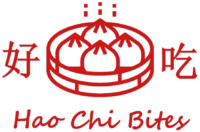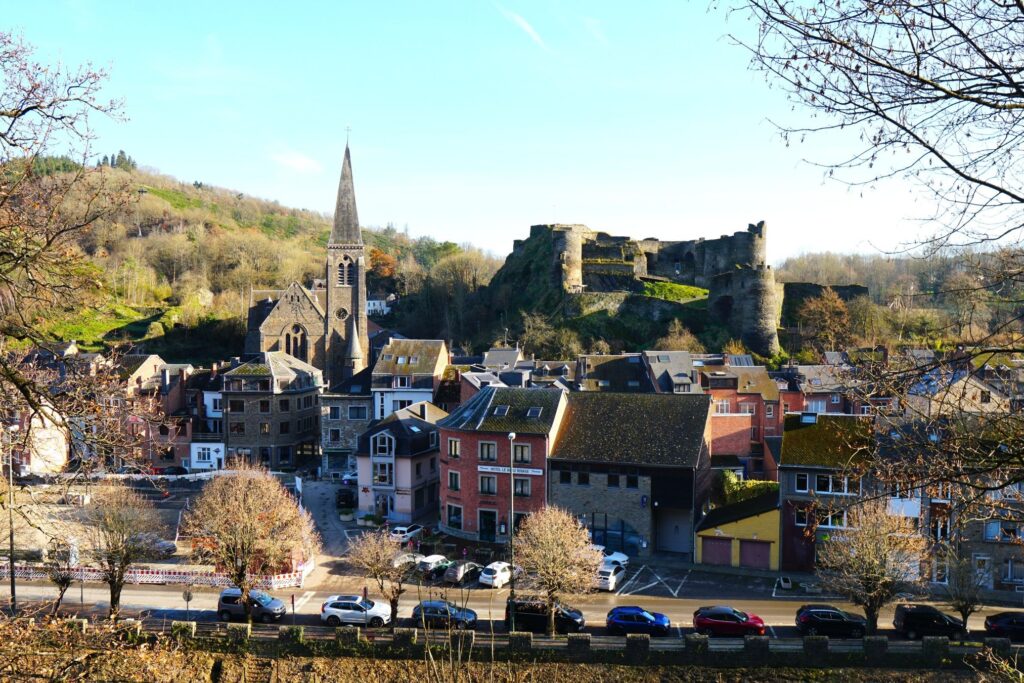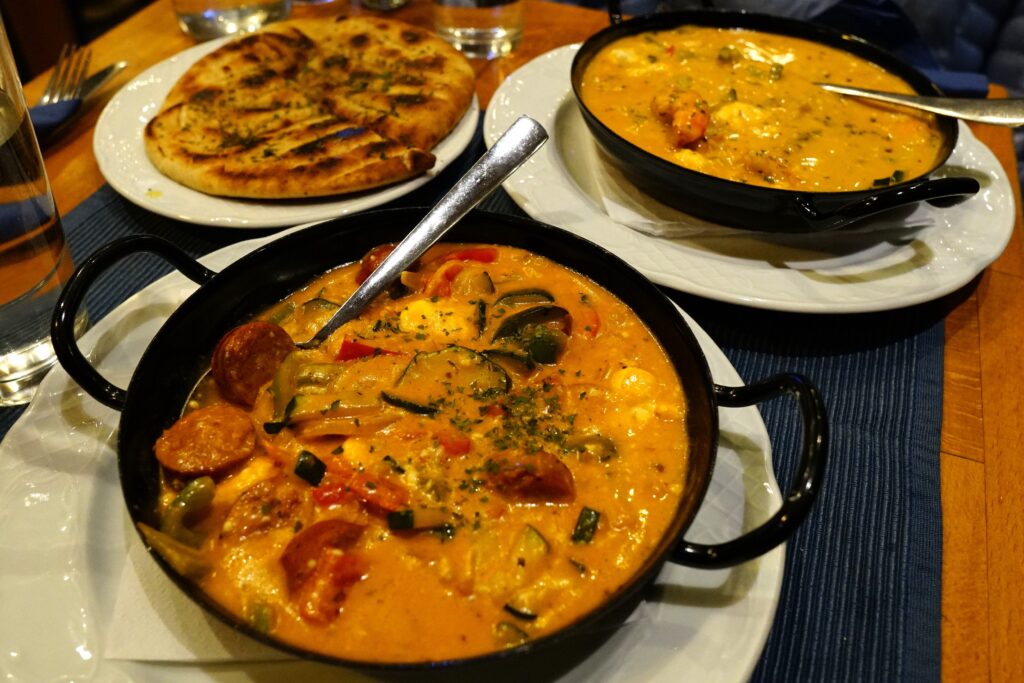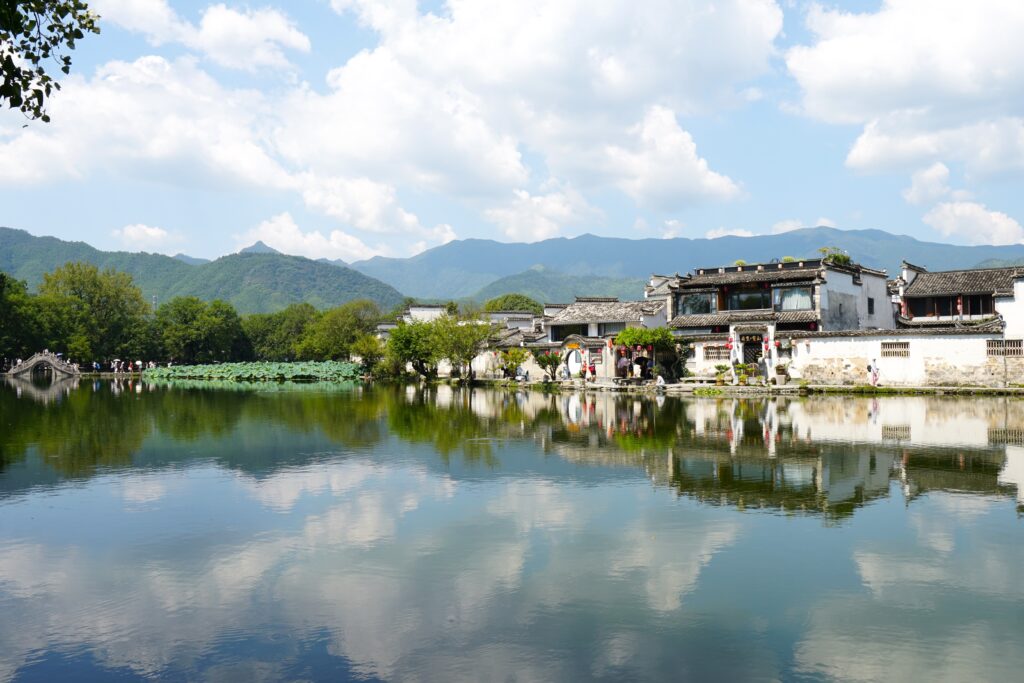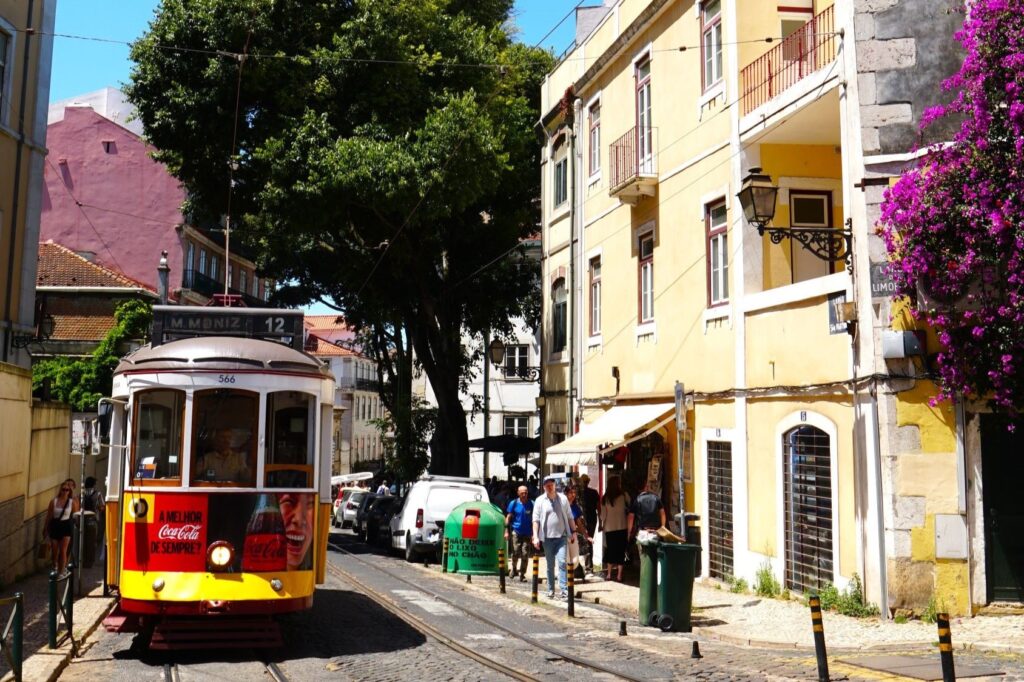The last day of our Belgian trip led us to La Roche-en-Ardenne, a picturesque town located in the heart of Ardennes, as we made on our way back to Frankfurt.
It was off-season, and breakfast spots were scarce, but we had prepared ahead, gathering simple provisions from a supermarket.

Often considered one of the most beautiful water towns in Belgium, La Roche-en-Ardenne is cradled by the Ourthe River, which meanders through its center. The town is a picture post-card – dominated by the ruins of a medieval castle (Château de La Roche-en-Ardenne, a 9th-century fortress) that looms over rooftops, a stone church (Église Saint-Nicolas) that rises nearby, and the river that reflects the golden morning light.

The crisp autumn air filled our lungs as we set out early under a clear sky. The chill was present but not piercing, softened by the warmth of the sun.

The trees were partly bare, their leaves tinged with the last shades of gold and rust.
Walking through the town, we were struck by its serenity — water weaving between buildings, mountain ridges lining the horizon, and the golden sunlight brushing against the raw-brick facades.



The architecture is distinctly Belgian, defined by earthy brown tones, unpainted bricks, and a simple yet sturdy beauty.



Among them is the Église Saint-Nicolas, a church dedicated to Saint Nicholas, the patron saint of children and sailors.

Not far from it, a red-brick house exemplifies the style of traditional Ardennes homes—solid, warm, and built to withstand time.

Another piece of history is a statue with the inscription “La Ville de La Roche à Ses Héros” (The City of La Roche to Its Heroes). This is a tribute to the fallen soldiers of World War II, a reminder of the town’s resilience during one of Europe’s most turbulent periods.
By the riverside, we noticed a wooden boat with the name “Viki” painted on it. We wondered if it was a reference to the Vikings, who once navigated European rivers. While Belgium is not typically associated with Viking history in the same way as Scandinavia or the British Isles, the Vikings did reach the region during their expansion in the 9th and 10th centuries. They traveled along rivers like the Scheldt and Meuse, engaging in trade, raids, and settlement. The name “viki” may be a small nod to this historical connection.

Tips for your visit:
Attractions
- Visit the Château de La Roche, a medieval castle with stunning views over the town and river.
- Other attractions include the Église Saint-Nicolas and the Battle of the Ardennes Museum for an insight into the region’s military history, particularly during World War II.
Hiking & Outdoor Activities:
- Try the Le Hérou Trail, a beautiful but challenging hike along the Ourthe River with rocky viewpoints.
- A short climb to the castle takes about 10-15 minutes on foot.
- Kayaking on the Ourthe River, cycling through the Ardennes, and enjoying the lush forests surrounding the town. There are several local outfitters that offer kayak rentals and organize guided trips.
Duration:
1-2 days is enough to see the highlights and enjoy nature.
Before leaving this La Roche, we stopped by a cozy restaurant in the town center called Le Quai Son. The restaurant has outdoor seating, but with the crisp air of the season, we opted for a table inside by the floor-to-ceiling windows. From there, we could watch the river slowly flow beside us, with mountains rising in the distance—a peaceful setting to recharge before hitting the road again.
Upon recommendation, we ordered two signature dishes.
The first dish arrived—a beautifully plated serving of chicken with tarragon sauce, alongside seasonal vegetables and grenaille potatoes.

The chicken boasts golden, crisp skin that gives way to tender, fall-off-the-bone meat. The mild flavor of the chicken lets you fully taste the tarragon sauce—a velvety, herbaceous blend, enriched with white wine, that balances between warmth and freshness. Tarragon, a herb known for its slightly anise-like aroma, is a classic ingredient in French and Belgian cuisine, often used in sauces to enhance poultry and seafood.
Each morsel is irresistibly juicy and silky, whether drizzled with sauce or dipped in for extra richness.



Each vegetables brings its own character. The Thai broccoli has a slightly peppery bite, while the purple sprouting broccoli delivers a deeper, nutty undertone. The Brussels sprouts have an earthy bitterness, while the baby cabbage tastes mild and tender. The carrots are sweet, and the eggplant is soft and creamy, soaking up the sauce like a sponge.
The grenaille potatoes have a delicate buttery texture, perfect for savoring every last drop of the luscious tarragon sauce.
The Venison Burger is a tower of rich flavors, served alongside golden fries, mayo, ketchup, and a salad of lettuce, apple and red beetroot


The venison patty was exceptionally tender and succulent, practically melting in the mouth with each bite bursting with rich, meaty juices.
Venison, known for being lean yet incredibly flavorful, offers a deep, slightly gamey taste, making it a luxurious alternative to traditional beef burgers.
The unforgettable Rochehaut cheese—a creamy, full-bodied Belgian cheese – envelops the patty in a velvety, slightly nutty richness. With each indulgent bite, the cheese oozes into the juicy venison, creating a heavenly fusion of bold, savory depth and smooth, melty decadence.
Adding to the flavor are crunchy walnuts and crisp raw red onions, balancing the burger’s richness. The walnuts have a subtle earthy crunch, while the onions contribute a sharp, slightly spicy bite.
To round it all out, the fresh salad—with sweet apple slices and earthy red beetroot— add a sweet, fresh contrast to the hearty dish.
The Waffle with melted dark chocolate, whipped cream, and powdered sugar is all about comfort and indulgence. This classic Belgian waffle boasts a soft, fluffy interior with slightly crispy edges, warm and golden, topped with rich dark chocolate that melts into a luxurious drizzle.
Belgium is famous for its waffles, and for good reason. With a rich waffle-making tradition, Belgium offers distinct styles like Liège waffle – denser and sweeter with caramelized sugar – and the light, crispy Brussels waffle, like the one here.

The dark chocolate, with its deep, intense, slightly bitter flavor, complements the sweetness of the waffle. Whipped cream adds a smoothness that balances the rich chocolate. Finally, the powdered sugar adds a delicate sweetness, enhancing the overall flavor.
The waffle hits all the right notes— comfort, sweetness, and a hint of indulgence. For anyone visiting Belgium, trying a waffle is a must. And for us, there is no better way to end our short but sweet Belgium trip 😊
